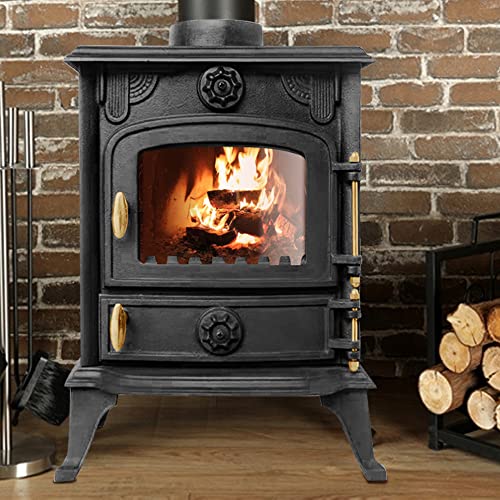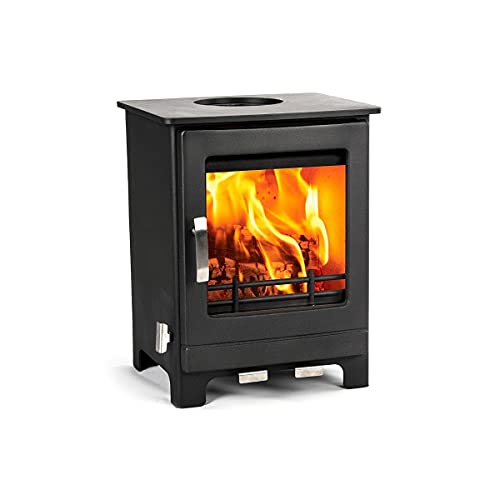What NOT To Do Within The Multi Fuel Stoves For Sale Industry
페이지 정보

본문
 Small multi fuel stoves ebay Fuel Stoves For Sale - Http://Aragaon.Net/ -
Small multi fuel stoves ebay Fuel Stoves For Sale - Http://Aragaon.Net/ -Small 3kw multi fuel stove-fuel stoves are offered for sale and provide the convenience of burning a variety of kinds of smokeless fuels. They are also versatile and can be used in a myriad of home decors and rooms.
If you reside in a Smoke Control Area choose an DEFRA approved stove, like the Stovax Stockton 5, to legally burn wood and other fuels that are smokeless.
Canister Stoves
Canister stoves use fuel stored in sealed canisters like propane, isobutane, or a mixture. The most well-known stove for backpacking is the canister stove, which offers an efficient fuel efficiency that is competitive and are easy to operate. They are the best 5kw multi fuel stove choice for summertime trips, trips that require you to keep your pack weight low or for those who prefer an easy-to-use system. However, they're not as effective in winter's harsh conditions and are not the ideal choice for high-altitude excursions.
Some canister-fuel systems, such as the Jetboil MiniMo System or MSR WindBurner System include an integrated design that attaches directly to the fuel canister. This creates an extremely compact and lightweight system. While this may help you save space in your bag but it also leaves the canister exposed to elements and makes it less tolerant to the rigors of windy conditions. Soto's WindMaster stove isn't integrated and comes with a pot support that is more durable. This design keeps the canister close to the burner, allowing better heat control during windy conditions.
Many stoves with canisters struggle in cold temperatures. As the temperature decreases, so does the canister pressure, which can cause malfunction or failure. The MiniMo pressure regulator counters this issue, providing constant heating even in temperatures below freezing.
Liquid fuel stoves can be refillable and require a separate fuel bottle. They offer a greater variety of uses. Some can take unleaded gas (the MSR WhisperLite International, for example) and others use white-gas, isobutane/propane mix, kerosene, or even white-gas. These flexible designs are the best choice for those planning to hike in areas where locating prefilled fuel canisters may be difficult.
Some backpackers prefer wood-burning equipment that are efficient in terms of energy consumption, but they add a large amount of weight and bulk. You can also find a variety of stoves for backpacking that are self-contained, and use wood or other biomass to provide fuel, such as the Solo Stove Lite above. These stoves are better suited for shorter backpacking trips and don't offer the same level of convenience like a canister or a liquid-fuel system.
Liquid Fuel Stoves
multi fuel stoves with back boiler-fuel stoves that use liquid fuel differ from stoves with canisters. They make use of pumps that keep the pressure inside the fuel container, and then forces it into a small nozzle, where it gets burnt. They are much better suited to winter camping and hiking and can be used in subfreezing temperatures. They are also easier to refill than canister stoves because you simply open the lid and pour more in. White gas is used in the majority of liquid fuel stoves. It is a highly refined fuel which has little or no impurities. It burns clean and hot even when temperatures are below freezing. Some also run on less expensive and dirtier fuels such as diesel or kerosene.
These stoves are heavier than canisters and come with a lot of moving parts and parts which need to be cleaned, primed, or replaced in time. They are usually more difficult to operate in windy conditions since the pumping action can cause the flame to flicker and smoke. Some also require a pre-priming procedure that involves burning a drip or two of fuel in a cup below the multi burner stove to heat the fuel and change it from a liquid to gas.
Liquid fuel stoves are great for backpacking and camping in winter at high elevations since they can operate well even in freezing conditions in which stoves that use canisters have a hard time. They also tend to be more stable than stoves made of canisters since they sit lower on the ground and have larger stove legs, which act as stable platforms. Some are as stable and multifuel as Trangia stoves X2 and can be used on the original Trangia burner if you have an Trangia adaptor.
Some models include a shaker jet, similar to MSR, which is better suited to the igniting of white gases. These stoves are also great for international travel, where canister fuel and even outdoor supply stores are difficult to locate. There are many excellent, lightweight, easy to use liquid fuel stoves on the market. The Kovea Hydra is one of the top.
Gas Stoves
When it comes to cooking, few things are as iconically American as the gas stove. It's difficult to find a home in the US without one, and they are popular for many reasons. They heat up quickly, use natural gas (typically cheaper than electricity) to provide energy, and don't require special installation or venting.
However, more and more scientists are raising concerns over the emissions they release. When they are fired gas stoves, they release formaldehyde and carbon monoxide in levels that are above EPA guidelines, as well as nitrogen dioxide, which is linked to a variety of health issues, including learning problems in children, lung infections and an increased risk of childhood asthma. Even when they aren't in use, they leak methane which is a greenhouse gas that is considered more potent than carbon dioxide, yet doesn't stay in the air as long.
The debate has sparked an argument over whether gas stoves should or shouldn't be banned. Lawmakers have also joined on the issue. A group of Republican senators have introduced two bills to prevent the CPSC from baning them, while House Republicans have passed legislation to safeguard consumers' right to choose the kitchen appliances they prefer.
Many homeowners are considering changing their gas stoves to electric or changing their existing stoves to reduce harmful emissions. Some are still unwilling to give up their kitchen appliance of choice. Here's what you need know about the risks associated with these stoves.
The amount of nitrogen dioxide generated by a stove is contingent upon the type of food that is being cooked and its temperature setting. However they can still generate significant amounts of nitrogen oxide when they are in operation. According to a study scheduled for 2020 by Rocky Mountain Institute, Physicians for Social Responsibility and Mothers Out Front, boiling water or baking a cake in a gas stove could produce NO2 concentrations that exceed outdoor air quality standards. But roasting a hen or using high-temperature settings can make those numbers explode.
If you're looking at cutting down on your carbon footprint it's essential to purchase an appliance that has a streamlined design and follow a few easy energy-saving tips. For instance, you should keep your burners clean to ensure they're working as efficiently as possible. It's also recommended to only use the burners you're required to, since excessive use can waste up to 40 percent of their power.
Portable Stoves
A small stove is an excellent accessory to your camping equipment, especially when you're on the moving. Stoves can help cook and stay hydrated when cycling, hiking or even backpacking. Stoves are powered by a variety fuel sources, including charcoal, wood propane, gas and propane. The cost of the stove is determined by the fuel you select and the amount of energy and efficiency it consumes and its size.
Small multifuel stoves can be very cost-effective, especially if you choose one that runs on propane gas or natural gas. They are also extremely efficient, consuming a less fuel than other types require to produce the same amount of heat. Gas stoves have a larger cooking surface than other types of. This allows you to cook two large pots or pans at the same time.
While you may think that it is costly to buy a butane-burner They are a great alternative for situations in which electricity isn't available. Its light weight and compact design make it simple to transport and store. It also has a fast-heating kind of stove, meaning you can cook your food in a matter of minutes.
In areas with limited access, however, it can be difficult to locate stoves that burn liquid fuel. Usually, they are self-pressurized, meaning you do not need a pump. However, you might require refilling them after you've used them. The intensity of the flame can be adjusted, meaning you don't need to decrease the amount of heat produced when simmering.
 Solid fuel stoves are lightweight and easy to use, however they are not suitable for windy or rainy conditions. They're often more smelly than other types of camp stoves. Additionally, they require you to bring a supply of Esbit fuel tabs.
Solid fuel stoves are lightweight and easy to use, however they are not suitable for windy or rainy conditions. They're often more smelly than other types of camp stoves. Additionally, they require you to bring a supply of Esbit fuel tabs.In recent years, wood-burning stoves have gained more popularity because they make use of fuel that is readily available and sustainable. They can be restricted in their ability to regulate flame and heat, and they may also be subject to local fire bans. To prevent creosote and flammability issues, they must be maintained in a controlled manner. Be sure to follow the height and clearance requirements. Also, make sure that you have a safe means to dispose of smoke and ash.
- 이전글Tips For Explaining Local SEO Company London To Your Boss 24.09.05
- 다음글SEO Specialist London Tools To Improve Your Daily Lifethe One SEO Specialist London Technique Every Person Needs To Know 24.09.05
댓글목록
등록된 댓글이 없습니다.
